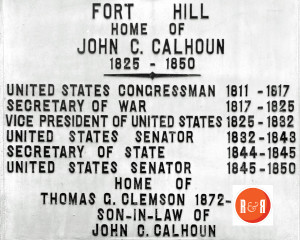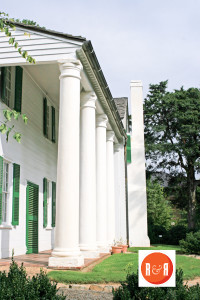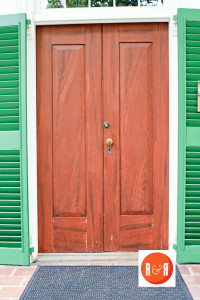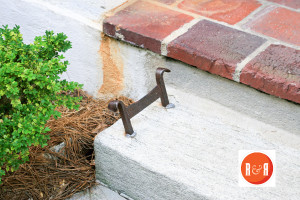“A passionate gentleman who believed strongly in the right of the individual states.”
City Directories and History: The home, ca. 1803, of John C. Calhoun who moved here in 1825. The original home was built by the Rev. James McElhaney (McElhenney) and when Calhoun died he left the house to Thomas Green Clemson. Originally the home was known as “Clergy Hill” due to the occupants: Rev. McElhenney and his son in law, the Rev. James Archibald Murphy each being clergyman. Rev. McElhenney was the minister at Hopewell Church and is reportedly buried at the church cemetery.

Identified as the Aiken Water Works. Courtesy of the Miriam and Ira D. Wallach Division of Art, Prints and Photographs: Photography Collection, the New York Public Library. The New York Public Library Digital Collections.
National Register: Fort Hill (John C. Calhoun Mansion & Library), the plantation home of John C. Calhoun during the last 25 years of his life is today well-maintained in the center of Clemson University campus. When he moved to the house in 1825 Calhoun was Vice President of the United States, at the height of his career, having gained national recognition as one of the “War Hawks” in the Twelfth Congress and as Secretary of War under James Monroe. He long aspired to the presidency, without success, but he did serve another cabinet position, as Secretary of State under John Tyler in 1845. In 1850 Calhoun died and Thomas G. Clemson, his son-in-law, eventually inherited the estate. Clemson lived in the mansion for many years and he willed the estate to the state of South Carolina for the establishment of an agricultural and mechanical college, with a provision to provide for the


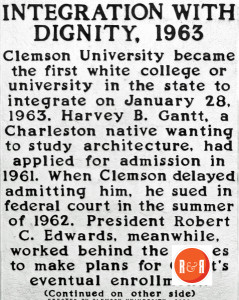

preservation of the Calhoun mansion. The Greek Revival mansion and office are all that remain from the former 1,100-acre plantation with many outbuildings. The one-room library or office is located about fifty feet south of the mansion. Listed in the National Register October 15, 1966; Designated a National Historic Landmark December 19, 1960. (Courtesy of the SC Dept. of Archives and History)
John C. Calhoun was born in 1782, near Abbeville, South Carolina, where he began the practice of law in 1807. He is most widely known for his championship of states’ rights against the “tariff of abominations.” The majority of Anglo-Americans in Texas shared his views in that matter and in favoring slavery. Though he never lived in Texas, he made a permanent place in the hearts and
memories of Texans by his prominence in the movement which led to the admission of Texas to the Union in 1845. The next year, 1846, three years before his death, parts of Victoria, Jackson, and Matagorda Counties were cut off to form a new county named in honor of John C. Calhoun.
Calhoun County, on the Texas coast, has three- fourths of its 536 square-mile area in land, one- fourth in water. Anglo-American colonization began in 1831 with the establishment of Linnville. Comanche Indians sacked and burned Linnville in 1840. The inhabitants escaped by boat to a bluff about three miles away and established what is now Port Lavaca, county seat of the county created in 1846. During the Civil War the Battle of Norris’ Bridge was fought in Calhoun County on Christmas Eve, 1863. Oil and gas were dis-covered in the county in 1935. Important exports pleasure resorts. Population in 1850 was 1,110, but has steadily increased to 17,830 in 1970.
(Information from: Names in South Carolina by C.H. Neuffer, Published by the S.C. Dept. of English, USC)
View the Clemson NR Historic District images and information at: CLEMSON UN HIST DISTRICT
Stay Connected
Explore history, houses, and stories across S.C. Your membership provides you with updates on regional topics, information on historic research, preservation, and monthly feature articles. But remember R&R wants to hear from you and assist in preserving your own family genealogy and memorabilia.
Visit the Southern Queries – Forum to receive assistance in answering questions, discuss genealogy, and enjoy exploring preservation topics with other members. Also listed are several history and genealogical researchers for hire.
User comments welcome — post at the bottom of this page.

R&R HISTORY LINK: A SCHSM Article: “Gen. Waddy Thompson and others from SC Opposed the War” by E.M. Lander Jr.

R&R HISTORY LINK: A SCHSM Article: “Duff Green, John C. Calhoun and the Election of 1828” by G.G. Ewing

R&R HISTORY LINK: A SCHSM Article: “Calhoun and the Politics of Creation of Indian Affairs Office” by Wm. S. Belko
Please enjoy this structure and all those listed in Roots and Recall. But remember each is private property. So view them from a distance or from a public area such as the sidewalk or public road.
Do you have information to share and preserve? Family, school, church, or other older photos and stories are welcome. Send them digitally through the “Share Your Story” link, so they too might be posted on Roots and Recall.
Thanks!
IMAGE GALLERY via photographer Bill Segars – 2007


